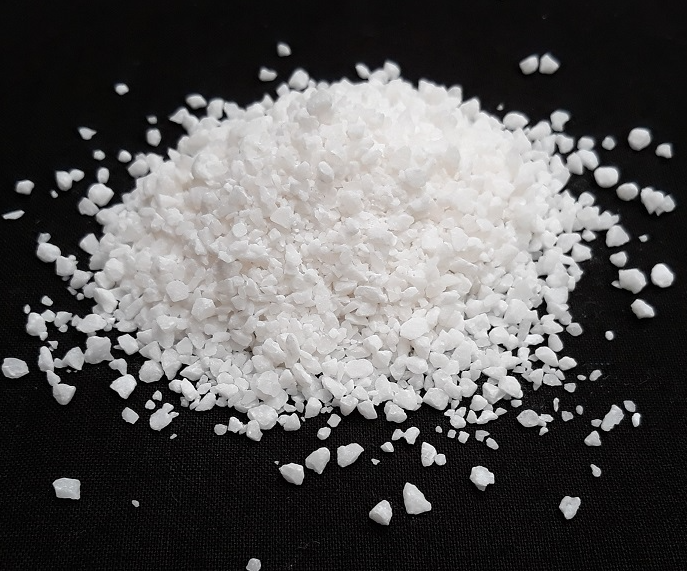Alum
What
Soils that have a naturally low anion storage capacity are particularly vulnerable for phosphorus loss. Applying alum (aluminium sulphate) to paddocks can be beneficial because it is phosphorus-sorbing, and therefore can reduce loss of phosphorus from soils. Alum has also been shown to lower the volatilisation of ammonia from manures.
The variation in anion storage capacity (also known as phosphate retention) between soil types is related to the amounts of specific iron and aluminium compounds and the type of clay minerals in the soils. This is determined by the type of rock or parent material that the soil has developed from. For example, soils developed from volcanic ash tend to have high anion storage capacity while soils developed from greywacke alluvium tend to have low anion storage capacity. Natural peat and sands also have a low anion storage capacity.
Alum application as a mitigation action is most appropriate for soils with a low anion storage capacity.

Image source: Kraftkolour.
Why
Alum dosing is a highly effective method for removing phosphorus from freshwater systems and has been commonly used as a method for water treatment. Alum chemically binds both suspended particles and dissolved phosphorus before settling from solution by a process known as flocculation.
The phosphorus binding component of alum is aluminium. Aluminium is a common element in the Earth’s crust and under neutral pH conditions forms a white, non-toxic, solid substance. However, under acidic (low) or basic (high) pH, aluminium dissolves and becomes toxic to aquatic animals. It is recommended that to prevent toxicity to aquatic animals, the total aluminium concentration does not exceed 200 µg l^–1^ at pH >6.0. Following application, the aluminium component of alum forms the mineral gibbsite in a process that can take up to a year.
Application of alum for agricultural land management shows alum can be dissolved in water sprayed onto the land to reduce loss of phosphorus from soils. Alum is most effective at stopping losses of phosphorus from runoff and can be applied to pastures and crops a week before grazing or immediately after to lower the mobility of phosphorus. There is also potential for alum to be used as a medium in subsurface drains to strip phosphorus from the drainage water.
Alum is currently being used by the Bay of Plenty Regional Council to help meet water quality targets for lakes Rotorua, Rotoehu, and Okaro.
Currently the main factors limiting the use of alum in New Zealand is that there are very few suppliers and alum is in high demand for use as a water treatment additive.
References
McDowell, R. W., & Norris, M. (2014). The use of alum to decrease phosphorus losses in runoff from grassland soils. Journal of Environmental Quality, 43(5), 1635-1643.
McDowell, R. W. (2015). Treatment of pasture topsoil with alum to decrease phosphorus losses in subsurface drainage. Agriculture, Ecosystems & Environment, 207, 178-182.
Moore Jr, P. A., Daniel, T. C., & Edwards, D. R. (1999). Reducing phosphorus runoff and improving poultry production with alum. Poultry Science, 78(5), 692-698.
Saunders, W.M.H. (1965). Phosphate retention in New Zealand soils and it’s relation to free sesquioxides, organic matter and other soil properties. New Zealand Journal of Agricultural Research. 8:30.
Tempero, G.W. (2015). Ecotoxicological Review of Alum Applications to the Rotorua Lakes. ERI Report No. 52. Client report prepared for Bay of Plenty Regional Council. Environmental Research Institute, Faculty of Science and Engineering, University of Waikato, Hamilton, New Zealand. 37 pp.